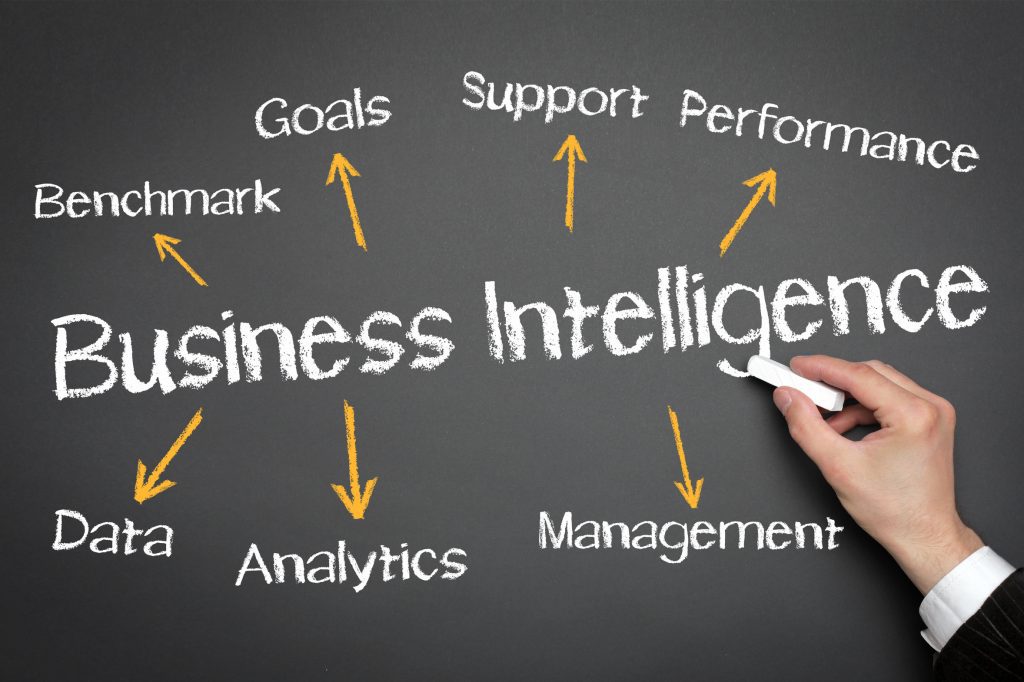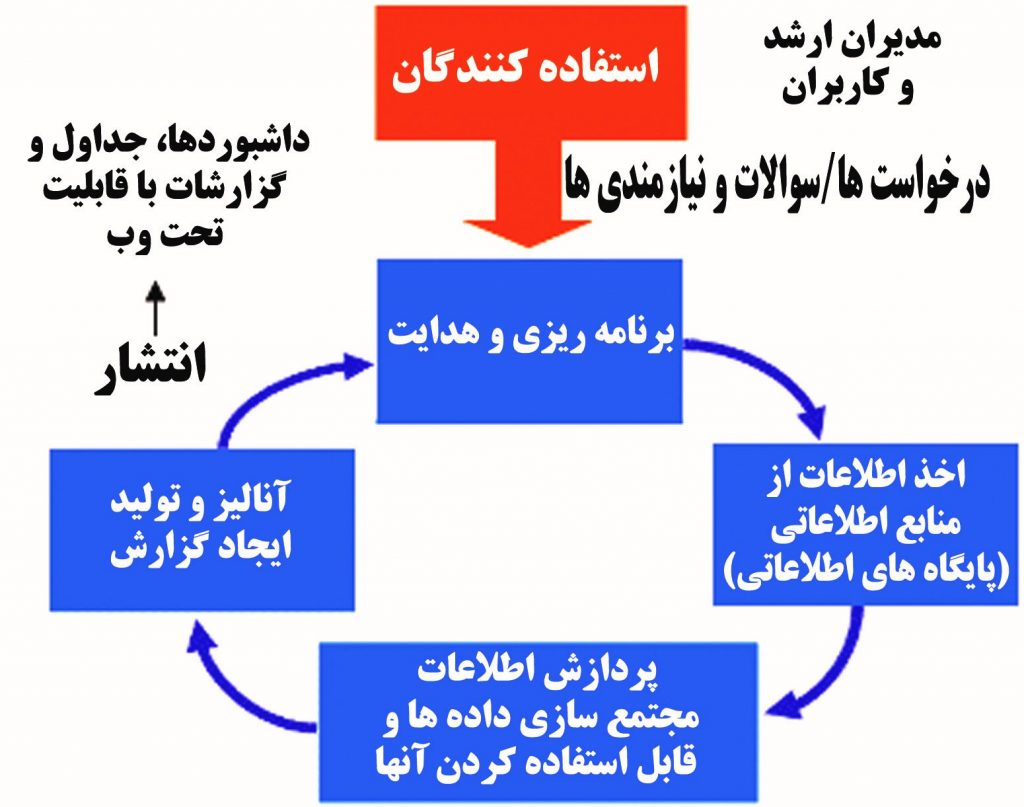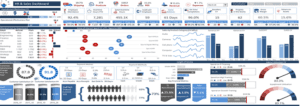We start with a simple example. Someone in a company can do their job better if their decisions are based on real information and not based on best guesses or how they have done the job in the past. What would happen if you had everything in your organization that the vendors of ERP, and business software, and other systems, and now business intelligence, promised you? It means the promise of immediate access to all the data available in your company and organization with digital dashboards and key performance indicators needed to manage your organization.
What would happen if you could do your job better by infinitely exploring the components in the existing data and from different perspectives (Slice&Dice), without needing to know from which system to the Transaction level (transactions), this data comes from?
QlikView is one of the business intelligence software that helps companies all over the world to achieve effective and reliable performance without additional hassle and high implementation costs through reporting and data analysis.
ERP, CRM and other types of systems and software are vital factors for managing organizations and companies. Unfortunately, when these systems perform data transactions and interactions well, they reduce reporting, analysis, and access to data. Improving the analysis and reporting capabilities of companies became one of the priorities of Chief Financial Officers (CFO) in 2005.
Weaknesses in reporting systems and information analysis have created a multi-million dollar market for business intelligence software. Business intelligence offers a great and wonderful promise to business leaders – instant access to all the information you need in a usable format – not just people and employees, not just the IT organization, but all managers and decision makers.

Why Business Intelligence?
Today, it can be confidently claimed that the use of business intelligence (BI) solutions can increase the competitiveness of an organization and differentiate it from other organizations. This solution allows organizations to take advantage of competitive advantages by using available information. This way makes it possible to better understand the demands and needs of customers and manage the relationship with them. This solution allows the organization to monitor positive or negative changes. Today, leading organizations do not talk about ERP and CRM, etc., the approach of organizations is towards business intelligence (BI). They seek to optimize processes by evaluating and improving the performance of themselves and their subordinates. Nowadays, increasing the efficiency of the performance of what has been invested has become more important.
In the past decade, many organizations have invested heavily in information technology, both hardware and software. In today’s cost-cutting economy, organizations and companies are asking themselves, “How much have we invested in technology so far?” And that “what have we benefited from this investment?”. Nowadays, investment in business intelligence (BI) is increasing in advanced and developed countries. Forrester’s research in 2003 of 877 organizations (small and large) and decision makers in the field of IT shows that they have a 1.9% investment growth in the field of IT, but 45% of them found the need to purchase business intelligence (BI) tools and They act for it. Why?
There are two main reasons why industries and organizations have become interested in business intelligence (BI). First, information age, second, economic issues.
In the information age, he who has information has power. Any organization and company that has this power will be distinguished and distinguished in its industry and profession in comparison with its competitors. Today, organizations and companies move and change at the speed of information. Getting the right information at the right time is the foundation of organizations.
Another reason for using business intelligence (BI) is economy. The survival of organizations and companies in the storm of today’s competitive economy is focused on two areas.

Reducing costs – increasing income
In an organization where business intelligence (BI) is used, managers can extract cost information from within the organization and know what the costs are and make decisions to reduce and eliminate them. Anticipate future changes and have a solution for their problems. In order to increase revenue, companies must, in addition to increasing their sales, for example, retain their current customers. Keeping customers is often a very pleasant thing to do. But we need to know which customer earns more profit. Usually, 20% of the customers provide 80% of the company’s profit. Companies should first retain customers who generate more profit. Business intelligence (BI) has many applications in this sector as well.

The next step is to analyze the behavior of the market, sales and customers are very profitable. This knowledge helps managers how to manage their customers. In order to attract the opinion of customers, the parameters of cost channels, sales to major customers, or changes in the profit margin, etc. may be considered. The important thing is that the behaviors with customers are not the same and every customer or group of customers will have their own relationships.
Finally, the fact that in addition to the above information characteristics, there are other managerial information for decision making in organizations that need analysis for decision making, such as information in the main mission of the organization or company, human resources information, production and manufacturing information, information Services provided and… Business intelligence (BI) is a solution to use this information and create intelligence in managers to make informed decisions and their decisions are based on facts and their conscious understanding of current and future changes and the use of records in the organization.
What is business intelligence (BI)?
Business intelligence (BI) means “having comprehensive knowledge of all people that is effective on the organization.”
Having deep knowledge of all factors such as: Customers (target community and audiences, clients, etc.), competitors, economic environment, organizational operations and processes (finance, sales, production, human resources, etc.) that have a great impact on the quality of management decisions in the organization, business intelligence and is work Organizational intelligence empowers you to make decisions on all factors affecting organizations and companies.
Business intelligence process in organizations and companies
Business intelligence process in organizations and companies is a dynamic and interactive process. This process starts with a question and the answers to the questions are provided in a repeating loop. These answers allow managers to make decisions. Pay attention to the figure below. The description of each of the steps is briefly explained below.

The description of each of the steps is briefly explained below.
The planning and guidance stage operates at the beginning and end of the business intelligence process. At the beginning of subsequent requests from decision-making managers and questions from the system by formulating questions, planning to answer the questions will begin.
The stage of obtaining information from the database
At this stage, information will be collected from all databases (information sources). The data collected is raw data and will not add awareness or knowledge to the user. These data should be processed and refined.
Information processing
At this stage, the collected data will be integrated, the relationships between them will be identified and analyzed, and finally they will be usable. This stage includes the stages of extracting information, converting information and loading information.
Analysis and generation of information
At this stage, intelligence is created by using advanced techniques from integrated data. At the end of this stage, the system will give intelligent answers to managers’ questions. This answer is published in the form of presenting reports, tables and charts, and the possibility of changing the question or examining the issue from other angles will lead to repeating the cycle of the above process.








